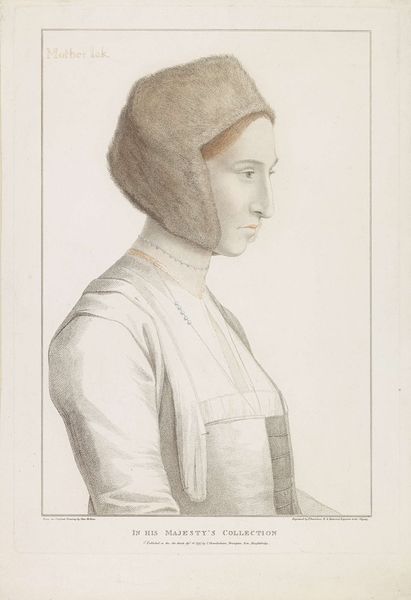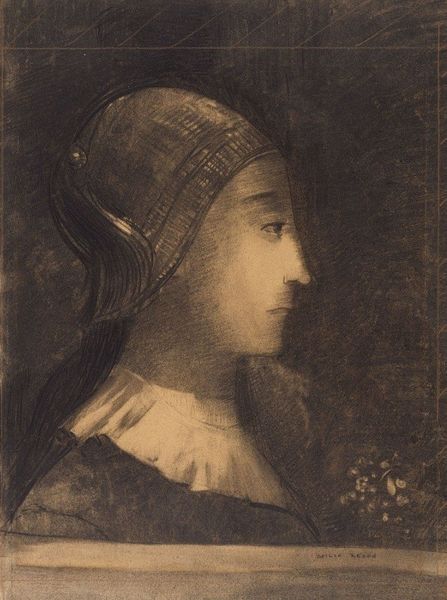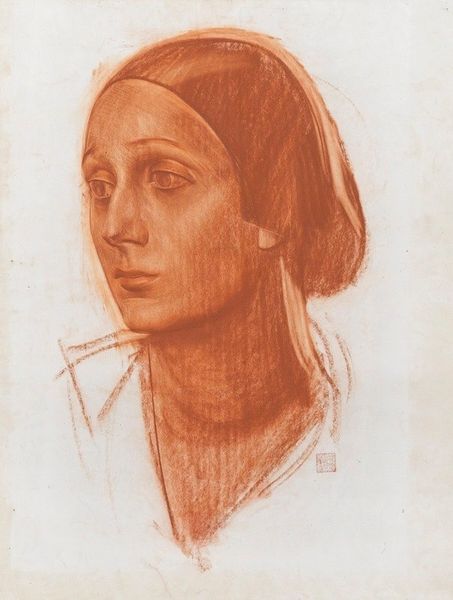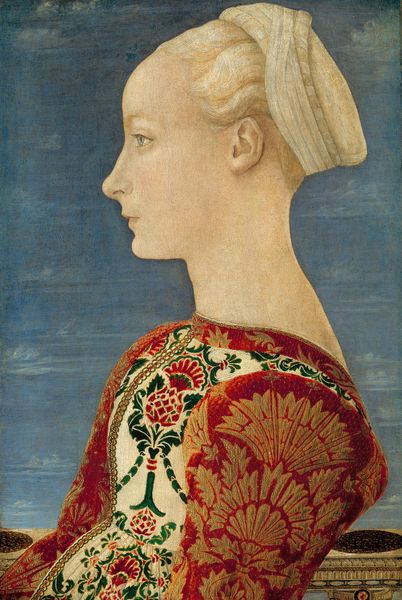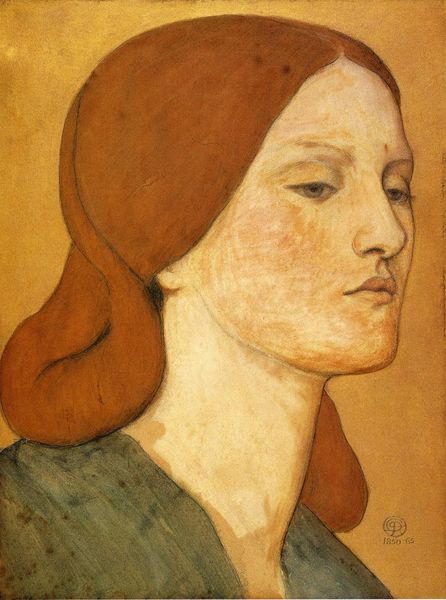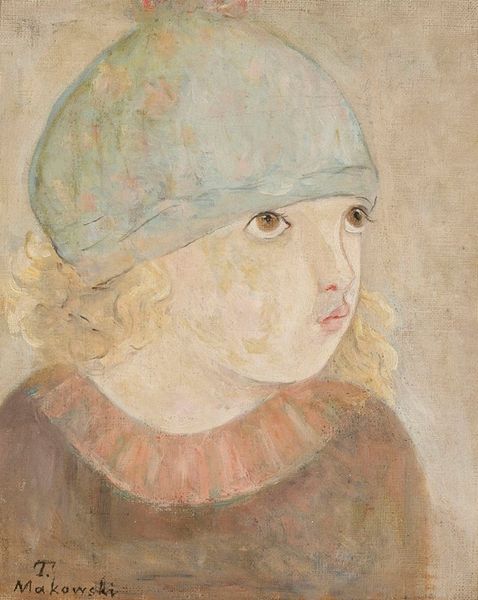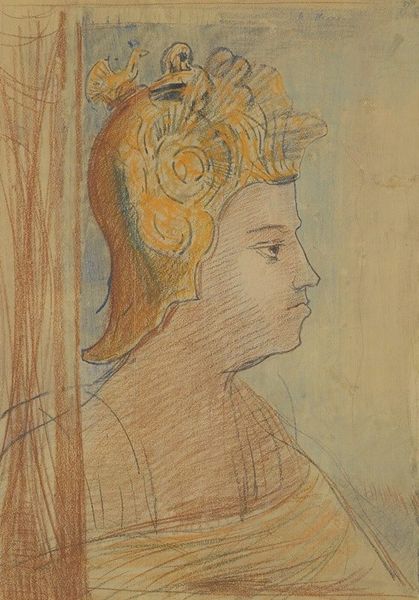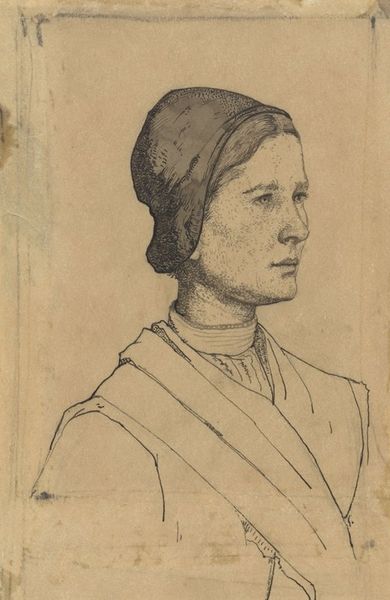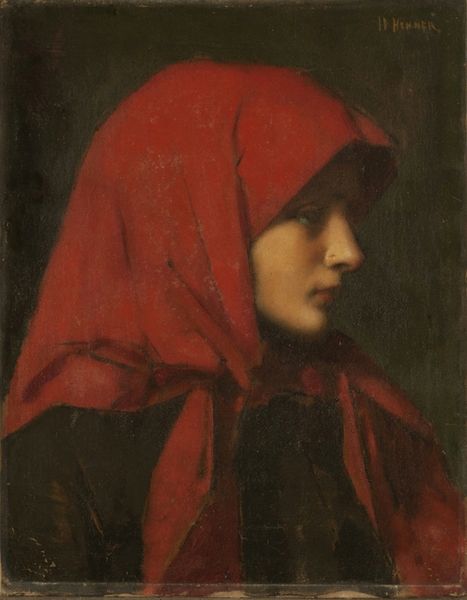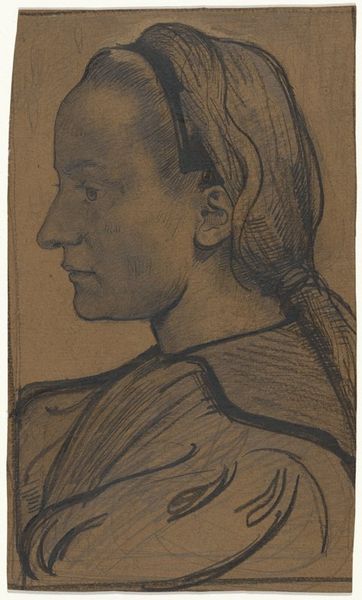
Jeune Homme, Vu De Profil; Copie D’apres ‘les Funérailles De St. Baernardin’ De Pinturicchio
0:00
0:00
drawing, painting, watercolor
#
portrait
#
drawing
#
painting
#
11_renaissance
#
watercolor
#
watercolour illustration
#
watercolor
Copyright: Public Domain: Artvee
Curator: Well, my initial impression is that I find it really lovely and sort of… wistful. The colors are muted and harmonious, and that soft focus gives him an ethereal quality. Editor: Indeed. What we're looking at is Edgar Degas's "Jeune Homme, Vu De Profil; Copie D’apres ‘les Funérailles De St. Baernardin’ De Pinturicchio." Essentially, it's a profile of a young man, done in watercolor. But perhaps more significantly, it’s Degas copying a detail from a Pinturicchio fresco. Curator: A copy? That’s so interesting! There's this sense of Degas engaging with the Old Masters. Did artists make copies to learn specific techniques? Editor: Absolutely! It was common practice. The Louvre was practically a classroom. Copying allowed artists to dissect the compositions and understand the techniques of revered masters. And notice Degas's choice. Why isolate this figure? What spoke to him in Pinturicchio’s work? Curator: Hmm, something in the expression, maybe? Or the line of his jaw? I feel as though I can intuit the soul. The young man seems reflective... perhaps burdened. Editor: Perhaps. Or consider this in a broader context. The mid-19th century was a time of intense cultural nationalism and historicism. Artists often looked back to the Renaissance for inspiration, to forge a sense of national artistic identity. It's not just about beauty. Degas could be seen as situating himself within a larger artistic and historical narrative. Curator: So much more than mere nostalgia. By referencing a funerary scene, perhaps Degas meditates on the legacy of the masters while also declaring a new phase? I sense echoes. Editor: Precisely! And consider watercolor – a medium often associated with sketches and preparatory studies. Is Degas elevating the copy, transforming a learning exercise into a statement in itself? Watercolor at the time carried certain social meanings in terms of artistic education and leisure, particularly for women of the upper classes, so to embrace watercolor may also hint toward artistic innovation. Curator: I love that! So this exercise really is more revolutionary that it seems upon a first viewing. I think it would make Pintericchio proud to see the old invigorated. Editor: Agreed. It invites us to consider how the past is constantly being reinterpreted and reimagined in the present. Curator: It’s humbling, actually, thinking about how artists across centuries are in dialogue, riffing on each other's work. Editor: Precisely, and maybe art viewers and experts as well.
Comments
No comments
Be the first to comment and join the conversation on the ultimate creative platform.
